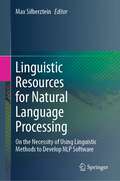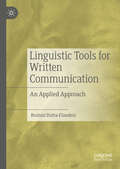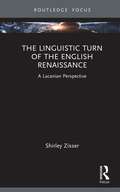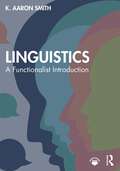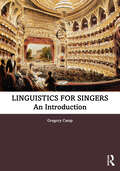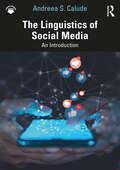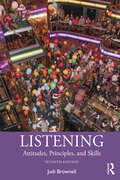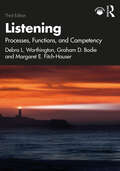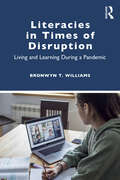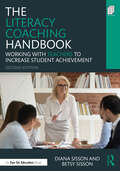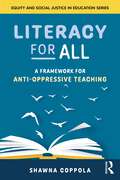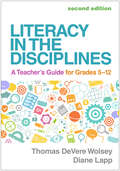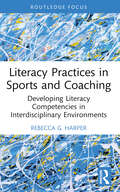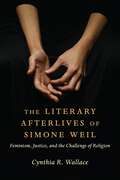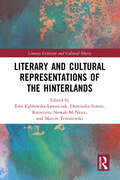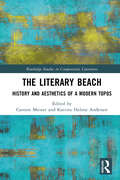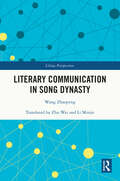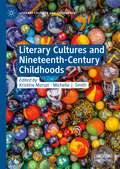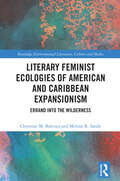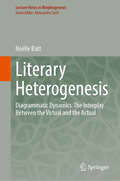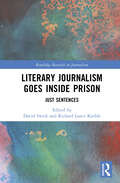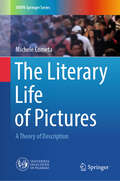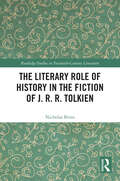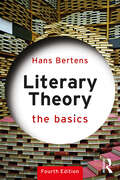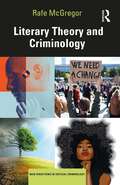- Table View
- List View
Linguistic Resources for Natural Language Processing: On the Necessity of Using Linguistic Methods to Develop NLP Software
by Max SilberzteinEmpirical — data-driven, neural network-based, probabilistic, and statistical — methods seem to be the modern trend. Recently, OpenAI’s ChatGPT, Google’s Bard and Microsoft’s Sydney chatbots have been garnering a lot of attention for their detailed answers across many knowledge domains. In consequence, most AI researchers are no longer interested in trying to understand what common intelligence is or how intelligent agents construct scenarios to solve various problems. Instead, they now develop systems that extract solutions from massive databases used as cheat sheets. In the same manner, Natural Language Processing (NLP) software that uses training corpora associated with empirical methods are trendy, as most researchers in NLP today use large training corpora, always to the detriment of the development of formalized dictionaries and grammars.Not questioning the intrinsic value of many software applications based on empirical methods, this volume aims at rehabilitating the linguistic approach to NLP. In an introduction, the editor uncovers several limitations and flaws of using training corpora to develop NLP applications, even the simplest ones, such as automatic taggers.The first part of the volume is dedicated to showing how carefully handcrafted linguistic resources could be successfully used to enhance current NLP software applications. The second part presents two representative cases where data-driven approaches cannot be implemented simply because there is not enough data available for low-resource languages. The third part addresses the problem of how to treat multiword units in NLP software, which is arguably the weakest point of NLP applications today but has a simple and elegant linguistic solution.It is the editor's belief that readers interested in Natural Language Processing will appreciate the importance of this volume, both for its questioning of the training corpus-based approaches and for the intrinsic value of the linguistic formalization and the underlying methodology presented.
Linguistic Tools for Written Communication: An Applied Approach
by Reshmi Dutta-FlandersThis book uses a linguistically and stylistically grounded analytical approach to written discourse to explain the patterns that appear when evaluating academic essays, and to explore the potential of ‘nativized’ linguistic tendencies as strategies in written communication. As 'linguistic behaviour', these strategies constitute a multinorm, and the author argues that comprehensive awareness of a written norm in a multilingual context is not about language rules for ironing out inequalities, but rather about varieties of linguistic practices that construct alternative strategies and patterns in written discourse. The book combines topics such as study skills, English as a Second Language and English for Academic Purposes, but grounds them within a World Englishes and syntactic paradigm, exploring why students write in a certain way due to their linguistic instincts, as well as helping students to see practical examples of what this means from the immediate perspective of sentence construction. It will be of interest to scholars of Education, Language and Linguistics, Study Skills, EAP and World Englishes, as well as students across disciplines who are encountering the academic essay as a form for the first time.
The Linguistic Turn of the English Renaissance: A Lacanian Perspective (Routledge Focus on Mental Health)
by Shirley ZisserThe Linguistic Turn of the English Renaissance: A Lacanian Perspective examines a selection of cultural phenomena of the English Renaissance, all of which include a focus on language, from a Lacanian perspective. The book examines four inter-related cultural symptoms of the English Renaissance: the paucity of painting, the interest in rhetoric, the emergence of a literary style focusing on form and a fascination with the myth of Orpheus. The book argues that the English Renaissance, an apex of rhetorical theory, can offer psychoanalysis further knowledge concerning the intrication of language and flesh, especially where feminine jouissance is at stake. These language-centred phenomena emerge against the backdrop of a peculiar configuration of the visual field, which in contrast to other cultures of the European Renaissance is largely barren of painting other than portraiture. The book will be of interest to psychoanalysts, scholars of Renaissance culture and those interested in the psychoanalytic study of culture.
Linguistics: A Functionalist Introduction
by K. Aaron SmithLinguistics: A Functionalist Introduction is a concise, accessible guide to the fundamentals of language and expression for students that are new to the subject.Unlike other introductions, this book uses a functionalist framework that reflects the way language users form, derive and change meaning in a holistic way: not just through the technical construction of sentences but from how language is experienced, used, stored and processed in the mind. Beginning by introducing the concept of linguistics and different approaches to the subject, the book progresses to introducing the building blocks of language, with chapters on phonetics, phonology, morphology, syntax and semantics. The scope then broadens out to examine language in context and use, including language change, writing systems, sociolinguistics, psycholinguistics and language acquisition. Each chapter is enriched with examples to aid learning. This textbook is an ideal choice for students or instructors looking for a more intuitive approach to learning the fundamentals of linguistics, and is ideal for introductory linguistics classes within avariety of programs, including and especially future language arts teachers.
Linguistics for Singers: An Introduction
by Gregory CampLinguistics for Singers: An Introduction is a textbook and manual that provides singers with a foundation in linguistic features of four major singing languages—English, Italian, French, and German—and shows how these features can be used to inform vocal performance and interpretation. Going beyond the basics of lyric diction, a grounding in linguistics enables student musicians to understand language holistically and more fully comprehend the music they are learning. The comparative approach to four common languages allows readers to readily grasp similarities and apply principles across vocal repertoire. Beginning with the sounds of a language and gradually moving up through larger levels of linguistic structure, from words to full texts, the chapters illustrate concepts using real examples from art songs and opera. The clear explanations enable readers new to linguistics to connect these concepts with their own musical practice. Designed for flexible use in courses on language and singing, lyric diction, repertoire studies, and collaborative piano, this book provides a vital resource for singers, vocal instructors, and conductors.
The Linguistics of Social Media: An Introduction
by Andreea S. CaludeThis accessible textbook introduces concepts and frameworks from linguistics and uses them in the analysis of language on social media. Assuming no prior knowledge of linguistics and with examples drawn from 12 different social media platforms, including TikTok, Twitter (the book was written prior to the X rebrand), Instagram, Facebook and Snapchat, The Linguistics of Social Media: An Introduction provides the tools to unpick how language is used to portray a particular identity, to persuade, to inform, to amuse and entertain, to vent and to complain.Analysing the language of social media highlights the strategies which operate in the messages and posts found on such platforms. Together, these strategies involve a wide variety of language registers, creativity and language play and a wealth of linguistic innovation. By evidencing the many nuanced ways in which people are engaging with social media, this book demonstrates how users of social media are linguistically savvy, strategic and skilled in navigating different genres and registers online.The book is divided into ten chapters, each comprising two parts: Part 1 introduces key linguistic theory and Part 2 consists of case studies with examples from different social media platforms to demonstrate a particular discourse purpose. Each chapter ends with a summary, references, suggested further readings and ideas for activities and discussions. There are multiple-choice questions and a glossary available online as support material. This is the essential textbook for all courses on language and social media, linguistics and language and communication courses.
Listening: Attitudes, Principles, and Skills
by Judi BrownellProvides an applied, experiential approach to listening instruction with special attention to interpersonal, family, professional, educational, and health contexts Market leading text for Listening courses in Communication, with additional application for management, education, and human resources courses Text contains practical features including case studies, exercises, discussion questions, and journal assignments --Online resources include PowerPoint slides and exercises
Listening: Processes, Functions, and Competency
by Debra L. Worthington Margaret E. Fitch-Hauser Graham D. BodieThis fully revised third edition explores the essential role of listening to human communication across contexts and cultures.Based on the premise that listening is a goal-directed activity, this book blends theory with practical application and builds knowledge, insight, and skills to help the reader become a more effective listener. In this new edition, theory and research has been updated with an emphasis on how the growing reliance on mediated communication affects how individuals communicate in their personal, professional, and educational lives. It introduces students to emerging concepts and methods such as neurodiversity and fMRI as well as evolving professional and educational contexts including aural architecture and "the musical brain".Addressing listening as a cognitive process, social function, and critical professional competency, this is an essential textbook for undergraduate courses in listening and communication studies.In addition to a fully updated instructor’s manual containing discussion questions, activities and assignments, and exam questions, this new edition includes PowerPoint slides and videos. They are available at http://www.routledge.com/9781032491257.
Literacies in Times of Disruption: Living and Learning During a Pandemic
by Bronwyn T. WilliamsThe wide-ranging disruptions of the COVID-19 pandemic altered the experiences of place, technology, time, and school for students. This book explores how students’ responses to these extraordinary times shaped their identities as learners and writers, as well as their perceptions of education.This book traces the voices of a diverse group of university students, from first-year to doctoral students, over the first two years of the pandemic. Students discussed the effects of having their homes forced to serve as classrooms, work, and living spaces, as they also navigated much of school and life through their digital screens. The affective and embodied experiences of this disruption and uncertainty, and the memories and narratives constructed from those experiences, challenged and remade students’ relationships with place, digital media, and school itself. Understanding students’ perceptions of these times has implications for imagining innovative and empathetic approaches to literacy and learning going forward.In a time when disruptions, including but not limited to the pandemic, continue to ripple and resonate through education and culture, this book provides important insights for researchers and teachers in literacy and writing studies, education, media studies, and any seeking a better understanding of students and learning in this precarious age. 2025 recipient of the Divergent Publication Award for Excellence in Literacy in a Digital Age Research from the Initiative for Literacy in a Digital Age
The Literacy Coaching Handbook: Working With Teachers to Increase Student Achievement
by Diana Sisson Betsy SissonLearn how to become a more effective literacy coach to ensure lasting changes in teaching and learning at your school. In this second edition, literacy experts Diana and Betsy Sisson offer clear, research-based strategies that encourage professional development and growth. You’ll discover how to … Understand the various roles that a literacy coach plays, from "change agent" to "data analyst"; Partner with administrators to build a school instructional team; Determine which coaching model to use with your teachers; Support your classroom colleagues and raise student achievement; Tackle the literacy concerns present in today’s schools, and any resistance from classroom teachers who don’t want to be coached; Discover innovative ways to provide multimodal coaching in the digital age; Design a plan to promote growth centered on assessment and collaboration; and Manage the multi-faceted responsibilities of literacy coaching with practical strategies. Each chapter contains special features such as Coaching Moves, Coaching Questions, Working With Administrators, and Additional Readings to help you apply the information to your own situation. In addition, the Appendices offer photocopiable PD tools and study guide questions so you can discuss the ideas with others. With this practical book, you’ll have all the guidance you need to overcome challenges and thrive in your coaching role.
Literacy for All: A Framework for Anti-Oppressive Teaching (Equity and Social Justice in Education Series #0)
by Shawna CoppolaAn equity-conscious, culturally sustaining approach to literacy education. Every student comes to the classroom with unique funds of knowledge in addition to unique needs. How can teachers celebrate and draw upon the valuable literacies each child already possesses to engage them more effectively in school literacy practices? In Literacy for All, Shawna Coppola shows how a literacy pedagogy founded on anti-oppressive principles can transform the experiences of teachers and students alike. Using her framework, which highlights the social and cultural aspects of literacy, teachers can help students participate in literacy experiences that illuminate their individual strengths. Coppola’s book, an ideal introduction for equity-conscious literacy educators, shows how to design instructional and assessment practices that reflect both the cognitive processes and the social practices inherent in learning to read and write.
Literacy in the Disciplines: A Teacher's Guide for Grades 5-12
by Diane Lapp Thomas DeVere WolseyThis successful guide--now in a revised and expanded second edition--gives teachers effective strategies to support adolescents' development of relevant literacy skills in specific disciplines. Demonstrating why disciplinary literacies matter, the authors discuss ways to teach close reading of complex texts; discipline-specific argumentation, communication, and writing skills; academic vocabulary; and more. The book draws on revealing interviews with content-area experts and professionals in history, science, mathematics, literature, the arts, and physical education. Teacher-friendly tools include 21 reproducible forms that also can be downloaded and printed, "Try It On!" practice activities, lesson plans, chapter anticipation guides, and links to recommended online teaching videos. New to This Edition *Chapter on assessment. *Chapter on disciplinary literacies beyond school--in civic, professional, and personal life. *Expanded coverage of math, more attention to evidence and sources used in different disciplines, new and updated expert interviews, and advice on how both teachers and students can use AI tools productively. *Anticipation guides that invite reflection on key questions before, during, and after reading most chapters.
Literacy Practices in Sports and Coaching: Developing Literacy Competencies in Interdisciplinary Environments (Routledge Research in Literacy Education)
by Rebecca G. HarperThis book addresses the ways in which literacy skills, including both reading and writing instruction, are introduced, reinforced, reviewed, and refined in a sports or physical education setting.While there has been significant research that highlights the academic benefits of sports participation and the use of sports programming and units for literacy instruction in the classroom, there is limited research regarding the literacy practices that occur as a direct part of sports participation. This book addresses this crucial gap in the scholarship. The argument presented in this manuscript contends that a number of literacy skills and competencies are taught in and through a number of sports programs and explores how they are effectively and naturally integrated into structured athletics/sports programming. Addressing engagement with literacy skills and competencies in a unique setting, it provides a new lens from which readers can view reading and writing.This book will be of critical interest to scholars and researchers with interests in literacy education and sports education, as well as instructional coaches, sports coaches, literacy educators, health and physical education teachers, middle and secondary educators, and administrators.
The Literary Afterlives of Simone Weil: Feminism, Justice, and the Challenge of Religion (Gender, Theory, and Religion)
by Cynthia R. WallaceThe French philosopher-mystic-activist Simone Weil (1909–1943) has drawn both passionate admiration and scornful dismissal since her early death and the posthumous publication of her writings. She has also provoked an extraordinary range of literary writing focused on not only her ideas but also her person: novels, nonfiction, and especially poetry. Given the challenges of Weil’s ethic of self-emptying attention, what accounts for her appeal, especially among women writers?This book tells the story of some of Weil’s most dedicated—and at points surprising—literary conversation partners, exploring why writers with varied political and religious commitments have found her thought and life so resonant. Cynthia R. Wallace considers authors who have devoted decades of attention to Weil, such as Adrienne Rich, Annie Dillard, and Mary Gordon, and who have written poetic sequences or book-length verse biographies of Weil, including Maggie Helwig, Stephanie Strickland, Kate Daniels, Sarah Klassen, Anne Carson, and Lorri Neilsen Glenn. She illuminates how writing to, of, and in the tradition of Weil has helped these writers grapple with the linked harms and possibilities of religious belief, self-giving attention, and the kind of moral seriousness required by the ethical and political crises of late modernity. The first book to trace Weil’s influence on Anglophone literature, The Literary Afterlives of Simone Weil provides new ways to understand Weil’s legacy and why her provocative wisdom continues to challenge and inspire writers and readers.
Literary and Cultural Representations of the Hinterlands (Literary Criticism and Cultural Theory)
by Ewa Kębłowska-Ławniczak Dominika Ferens Katarzyna Nowak-McNeice Marcin TereszewskiThis interdisciplinary collection explores the diverse relationships between the frequently ignored and inherently ambiguous hinterlands and their manifestations in literature and culture. Moving away from perspectives that emphasize the marginality of hinterlands and present them as devoid of agency and “cultural currency”, this collection assembles a series of original essays using various modes of engagement to reconceptualize hinterlands and highlight their semiotic complexity. Apart from providing a reassessment of hinterlands in terms of their geocultural significance, this book also explores hinterlands through such concepts as nostalgia, heterotopia, identity formation, habitation, and cognitive mapping, with reference to a wide geographical field. Literary and filmic revisions of familiar hinterlands, such as the Australian outback, Alberta prairie, and Arizona desert, are juxtaposed in this volume with representations of such little-known European hinterlands as Lower Silesia and Ukraine, and the complicated political dimension of First World War internment camps is investigated with regard to Kapuskasing (Ontario). Rural China and the Sussex Downs are examined here as writers’ retreats. Inner-city hinterlands in Haiti, India, Morocco, and urban New Jersey take on new meaning when contrasted with the vast hinterlands of megacities like Johannesburg and Los Angeles. The spectrum of diverse approaches to hinterlands helps to reinforce their multilayered and multivocal nature as spaces that defy clear categorization.
The Literary Beach: History and Aesthetics of a Modern Topos (Routledge Studies in Comparative Literature)
by Carsten Meiner Katrine Helene AndersenAs a geo-historical place, the beach integrates a variety of characteristics and functions so multiple that they tend to contradict each other. The beach is both a place of work and trade but also of leisure; it is both a place of therapy and health but also of migration, war, and death; it is a place of mass tourism and boredom but also the place of experiencing the Other; it is a public place but also an uncivilized and desolate place.This book studies the literary representation of the beach from ancient Greek literature up until today, drawing on English, French, Italian, American, and Spanish literatures from various periods and genres and presenting multiple ways of comparing and understanding literary beaches as a ubiquitous literary phenomenon. It demonstrates how the literary beach as a both geo-historical place and as an aesthetic literary commonplace has been a constant and privileged resource for the analysis of more general existential, sociological, and moral problems. This is the case when for instance the Tahitian beach becomes the place of the "already modern" in Stevenson's tales, or when the Italian beach becomes a question of modern feminism in Ferrante.In this sense, literature expands the local or national beach by articulating its transnational complexities.
Literary Communication in Song Dynasty (ISSN)
by Wang ZhaopengBased on first-hand historical materials, this book explores the various aspects of literary communication during the Song Dynasty in China.The book investigates the single-channel dissemination of poetry and ci works, the dissemination of literary collections, the dissemination through wall inscriptions, the oral dissemination of Song ci, the remuneration and commercialization of literature in the Song Dynasty, the paths to fame for Song writers, the non-literary factors in the dissemination of literature and the dissemination of literary works through paintings and songs. The author provides insights into the six major questions in the study of literary communication: Who disseminates, where, how, what, to whom and the effects of dissemination. The author also seeks to provide detailed answers to the following questions. What was the role of female singers in both domestic and official entertainment? What were the costs and prices of the books? Who paid the authors? What methods did writers use to gain fame and social recognition?This work will be essential reading for scholars and students of Chinese studies, communication studies and media and cultural studies.
Literary Cultures and Nineteenth-Century Childhoods (Literary Cultures and Childhoods)
by Kristine Moruzi Michelle J. SmithLiterary Cultures and Nineteenth-Century Childhoods explores the construction of the child and the development of texts for children in the nineteenth century through the application of fresh theoretical approaches and attention to aspects of literary childhoods that have only recently begun to be illuminated. This scope enables examination of the child in canonical nineteenth-century novels by Charles Dickens, Elizabeth Gaskell, Charlotte Bronte, and Thomas Hardy alongside well-known fiction intended for young readers by George MacDonald, Christabel Coleridge, and Kate Greenaway. The century was also distinctive for the rise of the children’s magazine, and this book broadens the definition of literary cultures to include magazines produced both by, and for, young people. The volume examines how the child and family are conceptualised, how children are positioned as readers in genres including the domestic novel, school story, Robinsonade, and fantasy fiction, how literary childhoods are written and politicised, and how childhood intersects with perceptions of animals and the natural environment. The range of chapters in this collection and the texts they consider demonstrates the variability and fluidity of literary cultures and nineteenth-century childhoods.
Literary Feminist Ecologies of American and Caribbean Expansionism: Errand into the Wilderness (Routledge Environmental Literature, Culture and Media)
by Christine M. Battista Melissa R. SandeThis book synthesizes ecofeminist theory, American studies, and postcolonial theory to interrogate what New Americanist William V. Spanos articulates as the "errand into the wilderness": the ethic of Puritanical expansionism at the heart of the U.S. empire that moved westward under Manifest Destiny to colonize Native Americans, non-whites, women, and the land. The project explores how the legacy of the errand has been articulated by women writers, from the slave narrative to contemporary fiction. Uniting texts across geographical and temporal boundaries, the book constructs a theoretical approach for reading and understanding how women authors craft counter-narratives at the intersection of metaphorical and literal landscapes of colonization. It focuses on literature from the United States and the Caribbean, including the slave narratives by Sojourner Truth, Harriet E. Wilson, and Harriet Jacobs, and contemporary work by Toni Morrison, Maryse Condé, Edwidge Danticat, and Native American writer Linda Hogan. It charts the contrast between America’s earliest idyllic visions and the subsequent reality: an era of unprecedented violence against women of color and the environment. This study of many canonical writers presents an important and illuminating analysis of American mythologies that continue to impact the cultural landscape today. It will be a significant discussion text for students, scholars, and researchers in environmental humanities, ecofeminism, and postcolonial studies.
Literary Heterogenesis: Diagrammatic Dynamics. The Interplay Between the Virtual and the Actual (Lecture Notes in Morphogenesis)
by Noëlle BattThis book advances a new interdisciplinary approach that engages with the concepts of science and literature through the mediation of philosophy (with a focus on the ideas of Gilbert Simondon and Gilles Deleuze). It investigates in innovative ways the multifaceted dimensions of creation, of genesis, considered here in artistic and mathematical terms as “heterogenesis”. The dialogic interaction among the three domains generates a renewed analysis of poems selected in the work of particularly inventive poets, both French and American—Emily Dickinson, e.e. cummings and Francis Ponge—as well as the artwork of Pierre Soulages, Anna-Eva Bergman and Cy Twombly. Literary Heterogenesis. Diagrammatic Dynamics. The Interplay of the Virtual and the Actual will interest specialists of mathematics, physics, literary theory and criticism, philosophy, and epistemology. It will also attract any curious mind drawn to the bridging of disciplines and the concepts of the two cultures.
Literary Journalism Goes Inside Prison: Just Sentences (Routledge Research in Journalism)
by David Swick Richard Lance KeebleLiterary Journalism Goes Inside Prison: Just Sentences opens up a new exploration of literary journalism – immersive, long-form journalism so beautifully written that it can stand as literature – in the first anthology to examine literary journalism and prison. In this book, a wide range of compelling subjects are considered. These include Nelson Mandela and other prisoners of apartheid; the made-in-prison podcast Ear Hustle; women’s experiences of life behind bars; Behrouz Boochani’s 2018 bestseller No Friend but the Mountains; George Orwell’s artful writing on incarceration; Pete Earley’s immersion into the largest prison in the United States, The Hot House; Arthur Koestler and the Spanish Civil War; Ted Conover’s year as a prison guard in Newjack: Guarding Sing Sing and (most originally) Bruce Springsteen’s execution narrative Nebraska. This volume will benefit anyone who writes, studies or teaches any form of narrative nonfiction. Eleven international scholars articulate what makes the work they are analysing so exceptional. At the same time, they offer insights on a diverse range of vital topics. These include journalism ethics, journalism and trauma, media history, cultural studies, criminology and social justice.
The Literary Life of Pictures: A Theory of Description (UNIPA Springer Series)
by Michele CometaThis book offers a theory of ekphrasis—the literary description of an artwork—from the perspective of Visual Culture studies. A theory of ekphrasis must take into account not only the rhetorical strategies articulated in the description of artworks, but also the complex interplay that holds together the pictures that are described, the gazes that rest on them, and the dispositives that mediate them. It is therefore a matter of linking the study of the verbal rhetoric with the dynamics that are established between the author, the reader, and the visual artworks, real or fictive, as well as the performative aspects of description and the mediascapes that, from time to time, condition the gaze and the visual experience of the authors and the readers. This book proposes thus to consider both the intradiegetic aspects of description and the extradiegetic ones that condition its verbal texture. Following the rhetorics of ekphrasis throughout the Western tradition, from its origins in Philostratus, its reappraisal by Johann Joachim Winckelmann, to the twentieth-century avant-garde, this book shows how ekphrastic techniques are historically determined by the relationship between pictures, gazes, and dispositives.
The Literary Role of History in the Fiction of J. R. R. Tolkien (Routledge Studies in Twentieth-Century Literature)
by Nicholas BirnsThis volume analyzes the literary role played by history in the works of J. R. R. Tolkien. It argues that the events of The Lord of the Rings are placed against the background of an already-existing history, both in reality and in the fictional worlds of the books. History is unfolded in various ways, both in explicitly archival annals and in stories told by characters on the road or on the fly, and in which different visions of history emerge. In addition, the history within the work can resemble, or be patterned on, histories in our world. These histories range from the deep past of prehistoric and ancient worlds to the early medieval era of the barbarian invasions and Byzantium, to the modern worlds of urbane civility and a paradoxical longing for nature, and finally to great power rivalries and global prospects. The book argues that Tolkien did not employ these histories indiscriminately or reductively. Rather, he regarded them as aspects of aesthetic and representative figuration that are above all literary. While most criticism has concentrated on Tolkien’s use of historical traditions of Northern Europe, this book argues that Tolkien also valued Southern and Mediterranean pasts and registered the Germanic and the Scandinavian pasts as they related to other histories as much as his vision of them included a primeval mythic aura.
Literary Theory: Theory And Literary Practice (The Basics #Xi)
by Hans BertensNow in its fourth edition, Literary Theory: The Basics is an essential guide to the complicated and often confusing world of literary theory. Readers will encounter a broad range of topics from Marxist and feminist criticism to postmodernism, queer studies, and ecocriticism.Literary Theory: The Basics shows, in an always lucid and accessible style, how literary theory and practice are connected, and considers key theories and approaches including: humanist criticism; structuralist and poststructuralist theory; postcolonial theory; posthumanism, ecocriticism, and animal studies; digital humanities and print culture studies. Literary theory has much to say about the wider world of humanities and beyond, and this guide helps readers to approach the many theories and debates with confidence. Expanded with updates throughout, this is the go-to guide for understanding literary theory today.
Literary Theory and Criminology (New Directions in Critical Criminology)
by Rafe McGregorLiterary Theory and Criminology demonstrates the significance of contemporary literary theory to the discipline of criminology, particularly to those criminologists who are primarily concerned with questions of power, inequality, and harm. Drawing on innovations in philosophical, narrative, cultural, and pulp criminology, it sets out a deconstructive framework as part of a critical criminological critique-praxis. This book comprises eight essays – on globalisation, criminological fiction, poststructuralism, patriarchal political economy, racial capitalism, anthropocidal ecocide, critical theory, and critical praxis – that argue for the value of contemporary literary theory to a critical criminology concerned with the construction of a just and sustainable reality in the face of climate change and other mass harms. This is the first criminology book to engage with literary theory from the perspective of criminology and provides a guide for criminologists who want to deploy literary theory as part of their research programmes. It supersedes existing engagements with poststructuralism in the philosophical criminological tradition because it entails neither a constructionist ontology nor a relativist epistemology. It shows criminologists how literary theory offers the tools to first deconstruct and then reconstruct meaning and value. Literary Theory and Criminology is essential reading for all critical criminological theorists.
